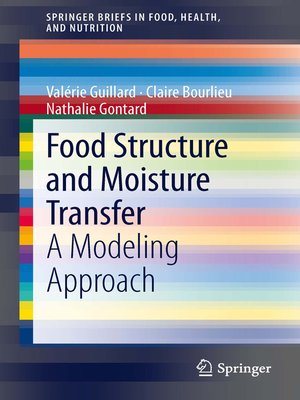Food Structure and Moisture Transfer
ebook ∣ A Modeling Approach · SpringerBriefs in Food, Health, and Nutrition
By Valérie Guillard

Sign up to save your library
With an OverDrive account, you can save your favorite libraries for at-a-glance information about availability. Find out more about OverDrive accounts.
Find this title in Libby, the library reading app by OverDrive.



Search for a digital library with this title
Title found at these libraries:
| Loading... |
It's well known that the structural characteristics of food materials influence their mass transfer, especially their water transfer properties during such processes as drying, hydration, and storage. In porous cereal-based products, for example, effective water diffusivity is highly affected by the volume fraction and distribution of both solid and gas phases, while in dense food materials, such as fat-based or other edible coatings, it depends on factors that affect the "tightness" of the molecular structure (e.g., free volume, cohesive energy density, crystallinity). This Brief will review the impact of food structure on moisture transfer. A multi-scale analysis of food structure will include a look at molecular structure (e.g., free volume, crystallinity), nanostructure, microstructure (e.g., porous food), and macrostructure (e.g., bilayer structure). For each structural analysis, a focus on the mathematical modelling of the relationship between structural properties and moisture transfer properties will be performed.






